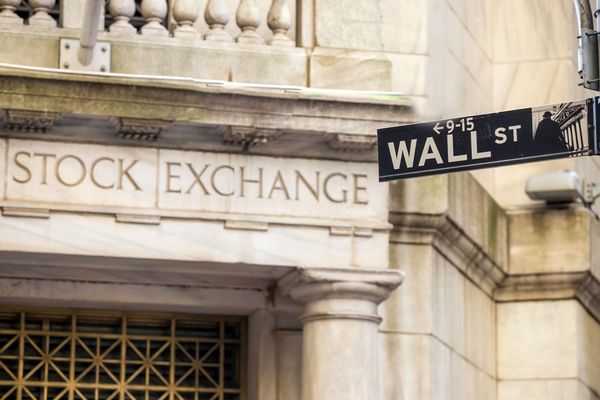
The June jobs report showed a still strong but cooling labor market, boosting the odds of a Federal Reserve interest rate cut coming sooner rather than later, experts say.
U.S. nonfarm payrolls increased by 206,000 last month, the Bureau of Labor Statistics said Friday, or essentially in line with economists' forecast for the creation of 200,000 jobs. Additionally, the blowout May jobs report was revised lower to 218,000 new hires from the 272,000 previously reported.
The unemployment rate, which is derived from a separate survey, ticked up to 4.1% in June from 4% the prior month. Economists forecast the unemployment rate, which is at half-century lows, to remain unchanged.
In another dovish development for rate policy, wage pressures remained static month-over-month. Average hourly earnings increased 0.3% – or the same rate reported in May – to match economists' forecast.
"Under the surface of the stronger-than-expected headline nonfarm payroll gain, this was a soft employment report that bolsters the case for a September rate cut from the Fed," writes Scott Anderson, chief U.S. economist at BMO Capital Markets. "We now have definitive evidence of U.S. labor market cooling with a somewhat alarming rise in the unemployment rate in recent months that should give policymakers 'more confidence' that consumer inflation will soon return to the 2.0% target on a sustainable basis."
Market participants are eagerly awaiting the Fed's first quarter-point cut, which will bring interest rates down from a 23-year high. Although the Federal Open Market Committee (FOMC) signaled just one cut this year at the Fed's June meeting, a slowing labor market and easing wage pressures have increased the odds of the central bank turning more dovish over the next couple of months.
As of July 5, futures traders assigned a 71% probability to the FOMC enacting its first cut in September, up from 58% a week ago, according to CME Group's FedWatch Tool. Meanwhile, the probability of the first cut coming in December dropped to 23% from 31% a week ago.
With the June jobs report now a matter of record, we turned to economists, strategists and other experts for their thoughts on what the data means for markets, macroeconomics and monetary policy going forward. Please see a selection of their commentary, sometimes edited for brevity or clarity, below.
June jobs report: The experts weigh in

"Today's jobs report is welcome news for the Fed, as it shows continued signs of softening in the labor market and supports other signs of a slowing economy. The rise in the unemployment rate to 4.1%, the highest since November 2021, and the downward revisions of 111,000 jobs for April point to a slowing jobs market, and the data reinforces the probability of a first rate cut in September." – Ivan Gruhl, co-chief investment officer at Avantax
"Combined with a number of weaker economic data points recently, today's jobs report should give the Fed reason to increase its focus on the employment side of its dual mandate. While it is especially difficult to predict what the Fed will do in advance of the election, this morning's data could increase the likelihood of a rate cut as soon as the September meeting. A labor market that is loosening but still solid, combined with impending rate cuts, could provide a backdrop for continued strength in the equity market." – David Royal, chief financial and investment officer at Thrivent
"On net, the job market looks considerably cooler in the June report than in May, and the unemployment rate at 4.1% is above where the median Fed policymaker projected it at year-end when they compiled economic projections last month. The June jobs report was pretty good. The unemployment rate edged higher, but isn't high by historical comparison. And wage growth continues to outpace inflation. The labor market's cooling trend is quite clear. If inflation holds in its recent range, the Fed is likely to make an initial rate cut at the following decision, in September." – Bill Adams, chief economist at Comerica Bank
"Despite the unemployment rate ticking up to 4.1%, it is only about half-a-percent higher than its historic low last year, continuing to show the resilience of the U.S. economy. Given this month marks the one-year anniversary of the last rate hike, we would expect tighter conditions to be having a more drastic effect on the consumer and labor market. Given this strength, the Fed is likely to continue its patient approach to rate cutting." – Ben Vaske, senior investment strategist at Orion Portfolio Solutions
"The jobs numbers were modestly below expectations when factoring in the revisions but are still indicative of a healthy labor market. This report absolutely keeps the probability of a September rate cut on the table. This still seems like the most likely outcome. This keeps the upcoming inflation data in the driver's seat for determining the timing of the first cut. This NFP data will neither cause the Fed to take a September cut off the table or force them to cut rates in September even if the inflation data does not continue to show moderation that we have seen recently. Signs of continued moderation of economic growth and the labor market will likely be a positive for equities and high-yield bonds in, at least, the short run. The market's pricing of two cuts in 2024 seems very reasonable." – Greg Wilensky, head of U.S. fixed income and portfolio manager at Janus Henderson Investors
"The latest jobs report is sure to cause fireworks between hawks and doves at the Fed. On the one hand, the labor market continues to cool, enabling the Fed to remain focused on inflation, raising the potential for its first rate cut in September should prices follow suit. On the other hand, the cadence of cooling is accelerating and could pose downside risks to a soft landing for the economy at large." – Noah Yosif, chief economist at the American Staffing Association
"Weakening in private payroll growth points to multiple rate cuts in the second half. Private payroll growth likely will slow even further over the coming months. The trend in jobless claims has continued to deteriorate in recent weeks, hiring and hiring intentions indicators remain depressed, job openings are back to pre-Covid norms, and households have become more fearful that unemployment will rise. Extremely high real interest rates, alongside slowing sales growth, will force more businesses over the coming months to squeeze staffing costs. In addition, the flattening in state and local government revenues over the last year suggests that growth in government payrolls will slow in the second half. Accordingly, we continue to expect growth in total payrolls to drop below 100,000 before the end of Q3 and think that investors are seriously underestimating how quickly the Fed will pivot to reducing rates. After a quarter-point cut in September, we continue to look for half-point easings at both the November and December meetings." – Ian Shepherdson, chairman and chief economist at Pantheon Macroeconomics
"Today's jobs report shows a slight softening in the pace and strength of employment despite the solid headline number. This report does not add urgency to the case for a July Fed rate cut. The market will likely respond to the increase in the unemployment rate to 4.1%, which is above the Fed's year-end projection of 4%." – Eric Merlis, managing director and co-head of global markets at Citizens
"The weaker cyclical categories like manufacturing and temp jobs show demand for labor is slowing. We also had higher unemployment rates and negative revisions. The job market is bending without yet breaking, which boosts the argument for rate cuts. Things are not too hot and not too cold. Goldilocks is here and September is in play." – David Russell, global head of market strategy at TradeStation
"The labor market remains strong, even as unemployment hit 4% last month for the first time since January of 2022. Despite downward revisions in previous reports regarding the number of new hires, job growth continues to beat expectations. Given this continued strength, we don't expect the Federal Reserve to consider cutting rates until at least November, especially since inflation, while easing, is still sticky above the Fed's 2% target level." – Joe Gaffoglio, president of Mutual of America Capital Management
"Following a strong jobs report in June, the July report shows continued strength in the labor market driven by increases in government, healthcare and social assistance. This data, combined with the JOLTs report released on Tuesday (8.1 million job openings and 1.2 job openings per job seeker), supports the narrative of a balancing labor market and moderating wage growth expectations." – Partick Connell, partner and industry sector head at Aon
"The increase in the unemployment rate, especially for those with at least a Bachelor's degree, suggests a modest cooling of the labor market. So far, we don't see apocalyptic signs within the labor market, but investors should be wary when the labor market is supported by government payrolls. The downward revisions to the previous two months is consistent with an economic slowdown. We should expect more rhetoric out of the Fed about labor market conditions and the importance of keeping policy appropriate for their dual mandate." – Jeffrey Roach, chief economist at LPL Financial










